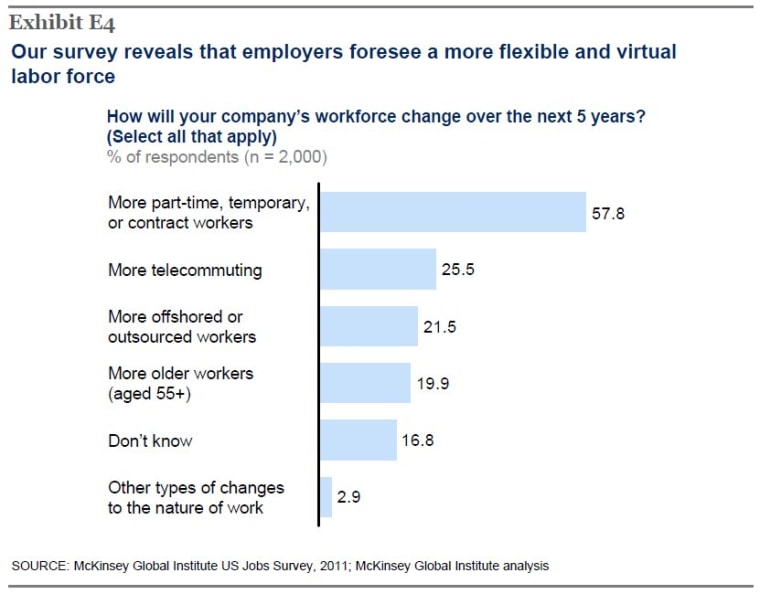By choice or chance, many workers have already given up the notion of a traditional, steady, full-time job with health benefits, a 401 (k) plan and desk to their name.
A new report finds that less steady work is likely to become even more common in the future.
The report from The McKinsey Global Institute finds that in the next five years, more than half of employers expect to rely more on temporary, part-time and contract workers for a variety of duties.
There are already 8.4 million involuntary part-time workers in the United States, according to the July unemployment data released Friday. Those are people who are working part-time but want a full-time job.
McKinsey, which surveyed 2,000 companies as part of an extensive paper on the future of work, predicts plenty of other changes to the working world as well. That’s partly because of new technology for everything from scheduling workers to working remotely, and also because of changing demographics.
About one-fourth of businesses will rely more on telecommuting. Employers also expect to outsource more work, and they are prepared for a workforce that includes more people who are 55 and older.
The report’s authors acknowledge that their analysis of the current job market is “sobering.” Even in their most optimistic scenario, the U.S. doesn’t return to full employment – defined as a 5 percent unemployment rate – until 2020.
